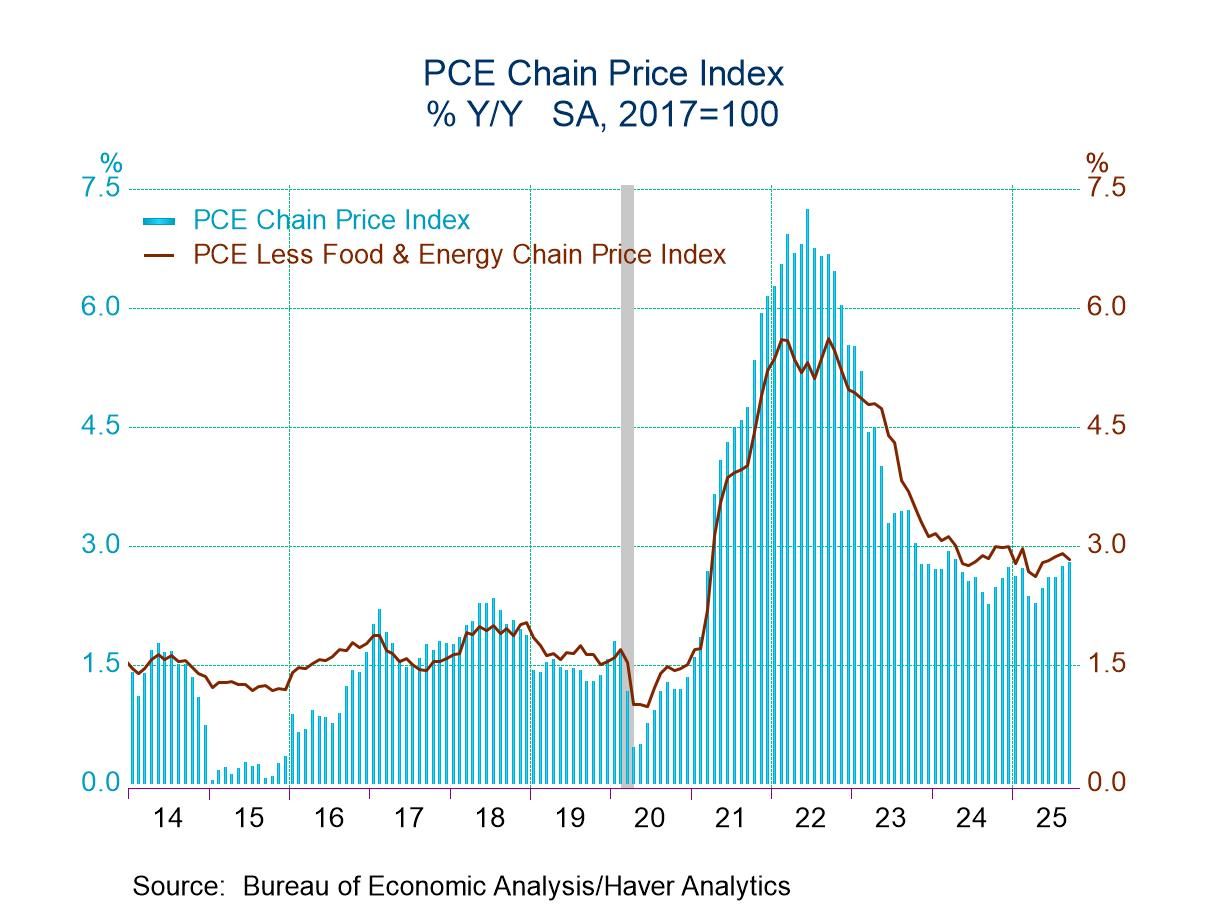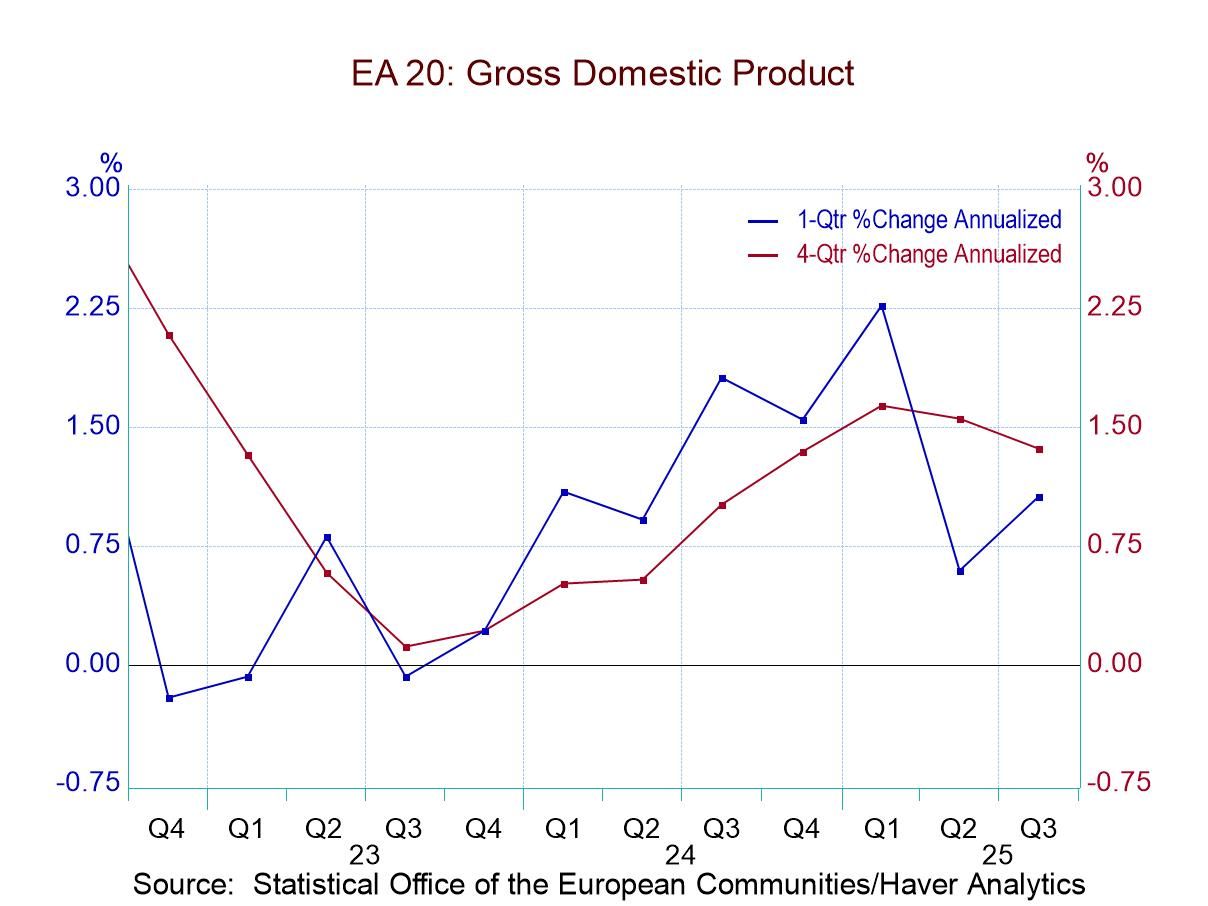 Global| Jul 28 2023
Global| Jul 28 2023Charts of the Week (July 28, 2023)
by:Andrew Cates
|in:Economy in Brief
Summary
Central banks have dominated the financial headlines this week but they have spawned few policy surprises so far. Rate hikes of 25bps from the Fed and the ECB were “in the price” as were comments suggesting that their tightening campaigns could be close to fruition. In light of this, our charts this week look at the view that persists among investors that a Fed policy tightening cycle is indeed close to completion (in chart 1). There is arguably less unanimity among investors on this over ECB policy but this week’s euro area money supply data certainly indicate that its monetary tightening campaign is working (chart 2). We then turn to this week’s firmer-than-expected US consumer confidence report from the Conference Board, how this tallies with recent surveys from Europe, and why weaker energy prices may have been a common driver (chart 3). Lower energy prices is a theme in our next two charts as well, firstly via its impact on goods price inflation in advanced economies (chart 4), and then on why the UK’s inflation arithmetic remains an outlier relative to other advanced economies (chart 5). We then stay with energy matters in our final chart this week via some updated data for 2022 for sources of global energy consumption (chart 6).
Market expectations for Fed policy Financial markets remain hopeful that this week’s 25bps rate hike from the Fed will earmark the end of its tightening cycle. For example, Fed funds futures contracts presently imply only a 22% probability of another 25bps hike at the next meeting in September. Meanwhile the implied level of the Fed funds rate from the March 2024 futures contract is 5.26%, 13 basis points lower than where it stands after this week’s 25bps hike.
Chart 1: Fed policy rate expectations implied from futures contracts

Broad money growth in the euro area This week’s broad money supply data were consistent with the idea that the ECB’s monetary policy medicine is working. The annual growth rate of the M3 aggregate, for example, fell to 0.6% in June 2023 from 1.0% in May. This rate of growth is arguably well below the level that would be deemed consistent with the ECB’s 2% inflation target. The counterparts, moreover, continue to show a steady deceleration in credit growth to both the private and government sectors (see chart 2) and to levels that imply an anaemic pace of overall lending growth.
Chart 2: Euro area M3 growth and its counterparts

Consumer confidence in the US and Europe Consumer confidence has staged a relatively impressive recovery in recent months. That was certainly the message from this week’s stronger-than-expected survey for July from the US Conference Board. It has been the message from recent consumer confidence surveys in Europe as well (see chart 3). A common driver is likely to have been weaker energy prices via its direct impact on household purchasing power and – via lower inflation – off the view that this could bring forward the end of central banks’ tightening campaigns.
Chart 3: Consumer confidence comparisons for the US, euro area and UK

Goods versus services inflation Goods price CPI inflation in advanced economies peaked at 9.4% last September and has fallen steadily since then to stand at 3.5% in June. Services CPI inflation peaked more recently, at 5.6% in March, and has fallen more slowly, to stand at 5.3% in June. These are the latest messages from Haver’s aggregations of goods and services CPI inflation. Falling energy prices and tight labour markets have been key to these respective trends, given the sensitivity of goods production to energy prices and of services activity to wage pressures.
Chart 4: Haver’s aggregation of goods and services CPI inflation

The price of energy in advanced economies Energy price gyrations go a long way too in offering a compelling explanation for why UK inflation has been relatively high and why Japan’s inflation has been relatively low compared with elsewhere. Measured with reference to a base of January 2020, the consumer price of UK energy was around 63% higher in July this year relative to where it was prior to the pandemic. This contrasts with Germany, where energy prices were 42% higher than pre-pandemic levels, with the US where prices were 33% higher, and with Japan where prices were just 8% higher (see chart 5 below).
Chart 5: The consumer energy price index in a sample of advanced economies

Global energy consumption sources Staying with energy, latest annual data for 2022 reveal a steady, albeit slow, shift away from non-renewable energy sources toward renewable sources. Renewables specifically accounted for 7.5% of global energy consumption in 2022, up from 6.7% in 2021. This increase was at the expense of coal, oil and nuclear power, whose respective shares of energy consumption drifted down very modestly.
Chart 6: Global energy consumption by source

Andrew Cates
AuthorMore in Author Profile »Andy Cates joined Haver Analytics as a Senior Economist in 2020. Andy has more than 25 years of experience forecasting the global economic outlook and in assessing the implications for policy settings and financial markets. He has held various senior positions in London in a number of Investment Banks including as Head of Developed Markets Economics at Nomura and as Chief Eurozone Economist at RBS. These followed a spell of 21 years as Senior International Economist at UBS, 5 of which were spent in Singapore. Prior to his time in financial services Andy was a UK economist at HM Treasury in London holding positions in the domestic forecasting and macroeconomic modelling units. He has a BA in Economics from the University of York and an MSc in Economics and Econometrics from the University of Southampton.






